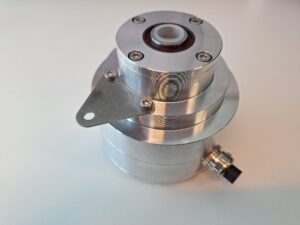Understanding Incremental Encoders: A Clear Guide
Incremental encoders are essential components in many industrial tasks where precise measurement of movement or position is required. Known for their accuracy and reliability, these devices are vital in fields like manufacturing, robotics, and automation. This guide will explore what they are, how they function, and why they matter in today’s technology landscape.
What is an Incremental Encoder?

Hollow shaft Incremental Encoder
An incremental encoder is a sensor that converts rotational or linear motion into electrical signals. These signals provide feedback on position, speed, and direction. Unlike absolute encoders, which offer a unique position value, this type generates pulses that need counting to determine the position. This feature proves particularly useful in situations where tracking movement is more important than knowing the exact position at all times.
How Do They Work?
These devices operate on a straightforward principle. They contain a rotating disk attached to a shaft, with equally spaced marks or slots around its edge. As the disk turns, an optical sensor detects these marks and creates a series of pulses. Each pulse represents a small movement or step of the shaft. By counting these pulses, a control system determines the relative position, speed, and direction of the movement.
These pulses usually appear as square waves, with two channels (A and B) often used to detect the direction of rotation. The difference in timing between these channels helps determine whether the movement is forward or backward.
Types of Incremental Encoders
These sensors come in various types, each designed for specific tasks:
- Rotary Encoders: These measure rotational motion and find wide use in motors, conveyors, and other machines that require precise control of rotational speed and position.
- Linear Encoders: These measure straight-line motion, making them ideal for tasks like CNC machines, where precise control over linear movement is essential.
- Optical Encoders: Optical versions use light to detect the marks on the disk. As a result, they deliver high resolution and accuracy, making them suitable for demanding applications.
- Magnetic Encoders: These use magnetic fields to detect movement. Therefore, many choose them for harsh environments where optical encoders might fail due to dust, dirt, or moisture.
Applications
These devices serve a wide range of industries:
- Industrial Automation: They control machines, ensuring precise movements and maintaining consistency in production processes.
- Robotics: They guide robots accurately by providing feedback on their movements, ensuring they follow the correct path.
- Elevators and Escalators: They monitor the speed and position of elevators and escalators, helping ensure safe operation.
- Printing and Packaging: In printing and packaging machines, these sensors position materials accurately, leading to high-quality results.
Benefits
The widespread use of these devices comes from several key advantages:
- High Precision: They offer excellent accuracy, which proves crucial for tasks requiring exact movement.
- Reliability: They perform solidly, even in challenging conditions.
- Cost-Effectiveness: They typically cost less than absolute encoders, making them a popular choice for projects with tight budgets.
- Versatility: Their ability to measure both rotational and linear motion allows them to adapt to various applications.
Conclusion
In conclusion, these sensors are essential in modern industries, providing crucial feedback for controlling movement and position. Their precision, reliability, and versatility make them a top choice in many applications, from industrial automation to robotics. By understanding how they work and where to use them, you can select the right one for your needs, ensuring optimal performance and efficiency.
By choosing these devices, businesses can benefit from accurate motion control, leading to increased productivity and reduced costs. As technology continues to advance, they will likely remain key components in developing new and innovative solutions across various fields.

